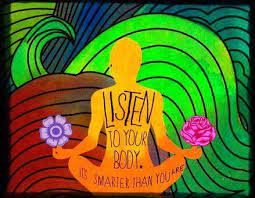People are busier than ever. From parents with small children to professionals who work long hours, it’s hard to find time for ourselves. This is why somatic therapy has become such a popular alternative treatment for relaxation and stress relief. In this article, we discuss the benefits of somatic therapy and how it can help you achieve your goals!
Contents
- 1 What is Somatic Therapy?
- 1.1 What are the Benefits of Somatic Therapy?
- 1.2 Types Of Somatic Therapy
- 1.3 How to Get Started with Somatic Therapy?
- 1.4 Core Principles Of Somatic Therapy
- 1.5 Origin Of Somatic Therapy
- 1.6 Is It Effective?
- 1.7 Criticism on Somatic Therapy
- 1.8 Role of Somatic Therapists
- 1.9 Questions To Ask From A Somatic Therapists
- 2 Conclusion
What is Somatic Therapy?
Somatic therapy is a form of psychotherapy that focuses on the physical sensations and experiences associated with emotions. This mental health treatment is based on mindfulness techniques, which help people become more aware of their body’s response to negative or positive stimuli. In somatic therapy sessions, clients are encouraged to explore various ways they can resist reacting to these feelings. In this way, people learn how to better understand themselves and their thoughts without always acting on them.
What are the Benefits of Somatic Therapy?
Somatic therapy helps you to become more aware of your body. It can help with relaxation. This can help reduce anxiety by helping people focus on the present instead of thinking about what might happen. Other benefits include:
- Feelings of safety
- Self-discovery
- Improved coping skills
- Greater mental clarity
- Enhanced body awareness
Types Of Somatic Therapy

There are many different types of somatic therapy, but the most common are:
- Alexander Technique: This technique helps people learn how to move in a more balanced and coordinated way.
- Feldenkrais Method: This approach uses gentle movements and touches to help people become more aware of their body’s movement patterns.
- Hatha Yoga: Hatha yoga is a form of yoga that focuses on physical poses, or asanas, and breathwork.
- Iyengar Yoga: Iyengar yoga is a type of hatha yoga that uses props to help people do poses.
- Pilates: Pilates is a mat-based exercise system that emphasizes strength, flexibility, and balance.
- Qigong: Qigong is an ancient Chinese practice that involves gentle movements and focused breathing.
- Rolfing: Rolfing is a type of deep tissue massage therapy that focuses on realigning the muscles, fascia, organs, bones, and nerves to improve posture. This can help people become more relaxed in their bodies by addressing any pain they may be experiencing.
- Somatic Yoga: Somatic yoga combines traditional hatha yoga with somatic techniques to relax the mind while strengthening the physical body.
- Tai Chi Chuan: Tai chi chuan is an internal martial art form based on meditation-like movement patterns done at slow speeds (usually less than 70 beats per minute). People who perform tai chi regularly are encouraged to connect with their spiritual selves.
- Yoga Nidra: Yoga Nidra is a type of guided meditation that relaxes the body and mind. It can help relieve stress, anxiety, and tension.
How to Get Started with Somatic Therapy?

If you’re interested in trying somatic therapy for relaxation or stress relief purposes, there are many ways you can get started! Here are some ideas:
- Attend classes at your local yoga studio
- Choose private sessions with an online instructor
- Learn from books on specific types of somatic therapies like hatha yoga or tai chi
- Join a support group such as one run by Iyengar yogis
- Attend workshops led by instructors who specialize in this form of mental health treatment
- Check out videos related to specific techniques like Feldenkrais or Pilates
- Somatic therapy is a powerful tool for relaxation, self-discovery, and stress relief.
If you’re looking for an alternative to traditional therapies like counseling or medication, this may be the right solution for you! Try out some of the techniques mentioned in this article and see how you feel. You may be surprised by the results!
Core Principles Of Somatic Therapy
Awareness
This form of therapy encourages people to become more aware and conscious of their bodies.
Feeling
In somatic therapy sessions, clients are encouraged to pay attention to feelings that have been repressed or ignored for a long time. In this way, people can learn how better understand themselves without always acting on them. Somatic therapists encourage the client’s thoughts about these feelings instead of suppressing or ignoring them. Talking about your feelings is good. It helps you know what is inside of yourself. This makes it easier to talk to people when you need something.
Movement
Somatic therapy is a way to talk about how your body feels. Sometimes people who have mental health problems that make them feel bad, like anxiety and depression, will also do somatic therapy. That means they move their body to feel better. Movement can help people to express themselves physically and emotionally, as well as help them to connect more with their bodies.
Balance
One of the main goals of somatic therapy is to create a sense of balance within the individual both mentally and physically. This involves creating harmony between the body and mind while addressing any physical pain or discomfort that may be present. When the body is in balance, it can lead to feelings of relaxation and calmness.
Origin Of Somatic Therapy
Somatic therapy is a relatively new form of treatment that has been around for less than 100 years. The first formal somatic therapy class was offered in the 1920s by Dr. Elsa Gindler, an early pioneer in the field.
Since then, the popularity of this form of mental health care has grown exponentially as more and more people discover its benefits. There are now many different types of somatic therapies to choose from, each with its unique approach to relaxation and self-discovery.
Somatic therapy is a form of alternative medicine that focuses on the body. It uses movement, feeling, and awareness to help people connect with their physical and emotional selves.
Is It Effective?
There is evidence to suggest that somatic therapy is an effective way to reduce stress and anxiety levels, as well as improve overall mental health. A study published in the journal “Complementary Therapies in Medicine” found that yoga Nidra was a successful treatment for reducing anxiety in cancer patients.
Another study published in the journal “Pain Practice” showed that Feldenkrais Method helped reduce pain symptoms among people with chronic headaches.
These are just a few examples of the many positive effects somatic therapies have been shown to have. If you’re looking for an alternative to traditional treatments, somatic therapy may be right for you!
Criticism on Somatic Therapy
There is very little research on the long-term effects of somatic therapies, so it’s difficult to say for sure how effective they are.
- Some people may find it difficult to connect with their bodies and emotions in a therapeutic setting.
- Somatic therapy can be expensive, depending on which type of treatment you choose.
Role of Somatic Therapists
Somatic therapists are trained professionals who help clients to connect with their bodies and emotions in a safe and supportive environment. They can provide guidance and support as clients explore the various benefits of somatic therapy.
If you’re considering trying somatic therapy, be sure to talk to your therapist about which type of treatment might be best for you. You should also ask about how long you can expect the treatment to last and what your responsibilities will be as a client.
From its origins in ancient Greece, somatic therapy has become an effective way for people to relax and enjoy their lives more fully.
This type of therapy is not only beneficial for mental health issues but physical ones as well!
Questions To Ask From A Somatic Therapists
- What is somatic therapy?
- How can I benefit from a somatic therapist?
- How long will my treatment last and how often should I come in for sessions?
- Is there anything I need to do during our sessions that would help you the most as a client?
- Are there any types of restrictions I should be aware of?
- How can somatic therapy help me to relax and feel good both physically and emotionally?
- What will my typical session look like?
- Is there anything else you would recommend for someone new to this form of treatment, such as reading material or other resources?
Conclusion
The somatic therapy blog post has provided you with a lot of information about this relatively new form of treatment. If you are interested in learning more, please visit our website for an overview and to find out how we can help you learn more about the benefits that come from somatic therapy. We hope that these insights into one type of psychotherapy have been helpful or interesting and we encourage your feedback and questions on what we’ve shared so far.
If you are looking for affordable Online Counseling MantraCare can help: Book a trial therapy session





